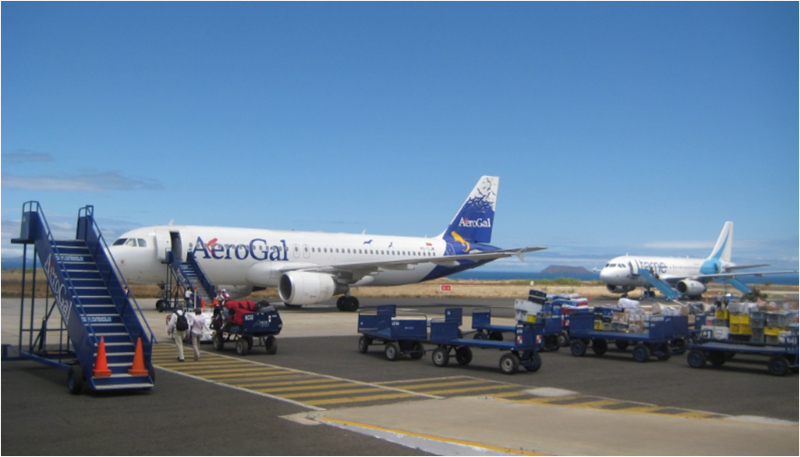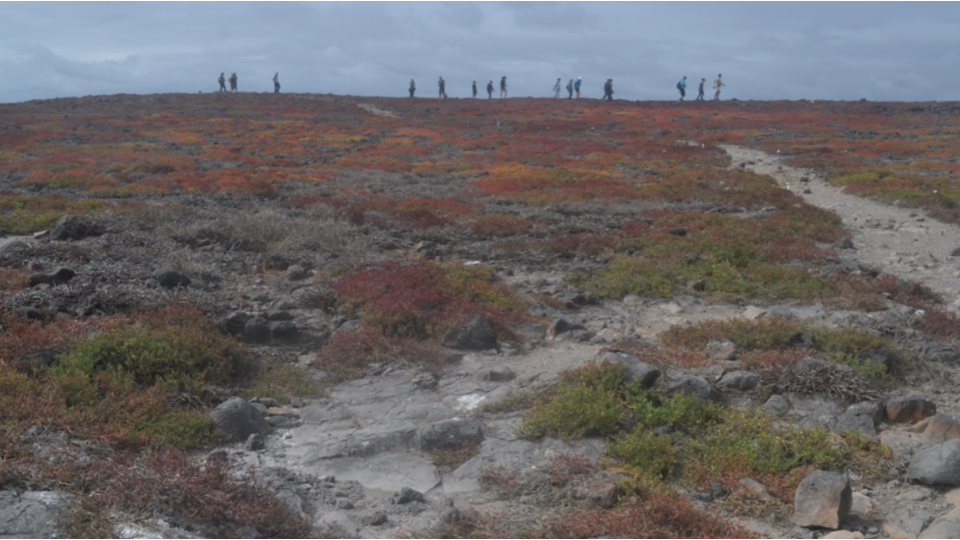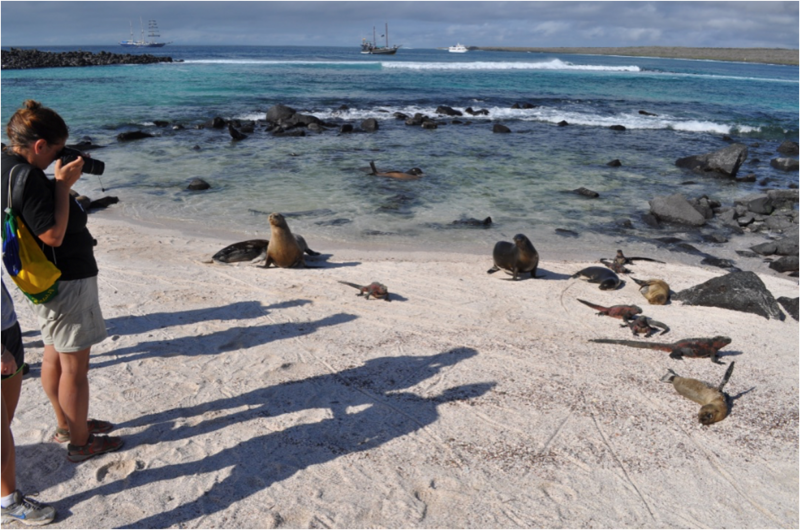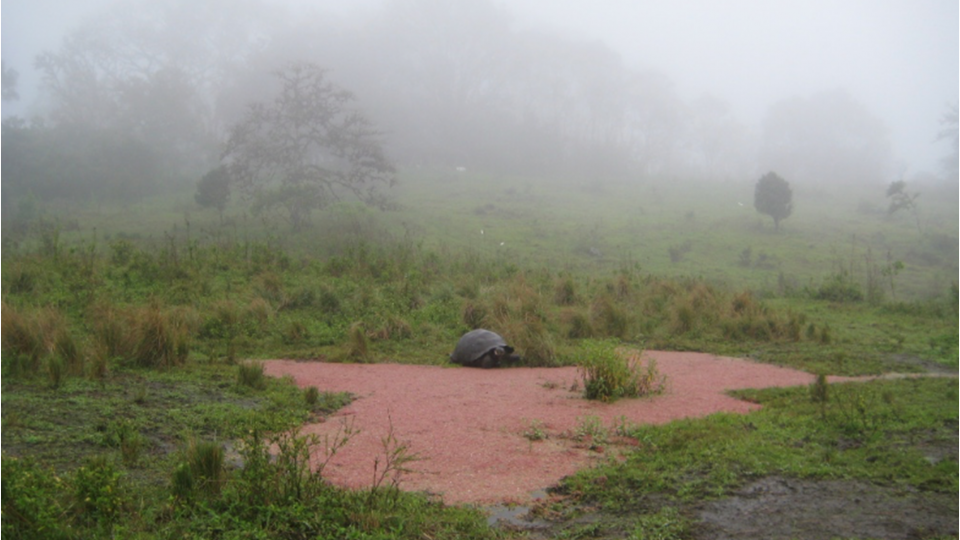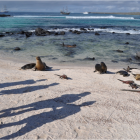The Galápagos Archipelago is often considered a “natural laboratory of evolution”—a place where biological oddities, like marine iguanas, flightless cormorants, and gigantic tortoises, evolved their peculiar forms as they adapted to the volcanic islands. Today, the metaphor is commonly repeated in nature documentaries and travel writing that sell tourists the opportunity to walk in the footsteps of Charles Darwin and witness nature in a “land before time.” For fifty years, naturalists have worked to conserve evolution itself by maintaining the islands’ isolation, even trying to return the Galápagos to a prehuman condition. But this is a paradoxical objective considering that Darwin taught us that life is always moving forward, never backward. In this so-called “Anthropocene” age of human-modified nature, is it possible to conserve the process of evolution as if isolated in a laboratory?
The idea of the Galápagos as a natural laboratory emerged not with Darwin, but in the 1930s when US and European naturalists began a campaign to establish a nature reserve there. At a time when field science was increasingly important for the study of ecology, they used the metaphor to assert the scientific importance of this evolutionary “truth-spot” where Darwin had gained crucial insight into his theory of evolution (Gieryn 2006). As Julian Huxley put it in 1964, the Galápagos should be “a living memorial of Darwin—not only a museum of evolution in action, but an important laboratory for the furtherance of … a truly Darwinian biology” (1966, p. 9). Protecting this natural laboratory was as much about preserving the site of one of the key origin stories of Western culture as it was about saving endangered species or the continuation of science.
Since 1959, 97 percent of the land area of the islands, which are Ecuadorian territory, has been protected as the Galápagos National Park, managed under scientific guidance from the Charles Darwin Research Station. Today biologists estimate that the Galápagos Islands are the best-preserved archipelago in the world, retaining 95 percent of its “original” endemic biodiversity (CDF and WWF 2002, p.1). Yet protecting the qualities that make the islands a natural laboratory—their isolation and relatively few native species—has proven difficult. Since the 1960s, park guards and conservation biologists have worked endlessly to control introduced species—among them feral goats, rats, blackberry brambles, and parasitic flies. Some of these programs, such as the US$45-million “Total Control Plan” to eradicate goats and other invasive species from several islands have become model successes in the island conservation world, despite local contestations.
Other control campaigns, however, have failed. The “Total Control Plan” succeeded in eradicating only four of 30 targeted botanical species. Blackberries, for example, grow in dense thickets that cover at least 30,000 hectares and eradication efforts actually helped seeds germinate. The Sisyphean task of removing such species has provoked calls among some biologists to “embrace the invasives” (Vince 2010). Yet calls to accept novel ecosystems have been controversial in this place where desire to protect nature as it evolved in deep time has produced explicit policy goals of going “Back to Eden,” restoring the biology of the islands to their state in 1534, the year before the uninhabited archipelago was first discovered by the Spanish (CDF and WWF, 2002, p. 1). The desire to purify nature in the laboratory, however, sits uneasily with celebrations of the islands as an evolutionary showcase. For what is biological invasion if not an evolutionary experiment in adaptation and the “survival of the fittest”—a recent replay of the “colonization” once undertaken by all the species now classified as native?
Conservation biologists trace the distinction between native species and newer introductions to the human role in their colonization. A natural laboratory, at least as interpreted in the Galápagos, is one not contaminated by human presence. But the success of the tourism industry has increased the human presence in the archipelago tenfold since the mid-twentieth century. Anthropologist Diego Quiroga calls this the “Galápagos paradox” because, like management of nonhuman species, tourism rests on the idea of a experiencing pristine, prehistoric nature—but the industry brings with it flows of people, organisms, and goods that disrupt this imagination and have the potential to harm island ecologies (2009). Owing greatly to the development of the industry over the past 30 years, some 30,000 people now live in four towns across the archipelago and more than 200,000 tourists visit each year.
This entanglement with human history is a long-standing fact that challenges the natural laboratory ideal. The modernist vision of a controllable place of pure nature isolated from social worlds does not hold. While conservation is no less important today than it was a half century ago, it can no longer attempt to restore an “evolutionary Eden.” Instead, we need to ask open-ended questions about what the Galápagos are, and who they are for, that recognize that evolution in this “laboratory” has always been shaped by the ways the archipelago is connected to the flows of global history.
How to cite
Hennessy, Elizabeth. “The Galápagos Islands: A Natural Laboratory?” Environment & Society Portal, Arcadia (Summer 2018), no. 14. Rachel Carson Center for Environment and Society. doi.org/10.5282/rcc/8343.
ISSN 2199-3408
Environment & Society Portal, Arcadia
 This work is licensed under a Creative Commons Attribution 4.0 International License.
This work is licensed under a Creative Commons Attribution 4.0 International License.
2018 Elizabeth Hennessy
This refers only to the text and does not include any image rights.
Please click on an image to view its individual rights status.
- Charles Darwin Foundation (CDF) and World Wildlife Fund (WWF). A Biodiversity Vision for the Galápagos Islands. Puerto Ayora: CDF, 2002.
- Gardener, Mark R., Rachel Atkinson, and Jorge Luis Rentería. “Eradications and People: Lessons from the Plant Eradication Program in Galápagos.” Restoration Ecology 18, no. 1 (2010): 20–29.
- Grenier, Christophe. Conservacion Contra Natura: Las Islas Galápagos. Quito, Ecuador: ABYA YALA, 2007.
- Huxley, Julian. “Charles Darwin: Galápagos and After.” In The Galápagos: Proceedings of the Galápagos International Scientific Project, edited by Robert Bowman, 3–9. Brussels: Palais des Academies, 1966.
- Ospina, Pablo. Galápagos, Naturaleza y Sociedad: Actores sociales y conflictos ambientales en las Islas Galápagos. Quito, Ecuador: Corporación Editora Nacional, 2006.
- Quiroga, Diego. “Crafting Nature: The Galápagos and the Making and Unmaking of a ‘Natural Laboratory.’” In Journal of Political Ecology 16, no. 1 (2009): 123–40.
- Vince, Gaia. “Embracing Invasives.” In Science 331, no. 6023 (2011): 1383–84. doi:10.1126/science.331.6023.1383.


